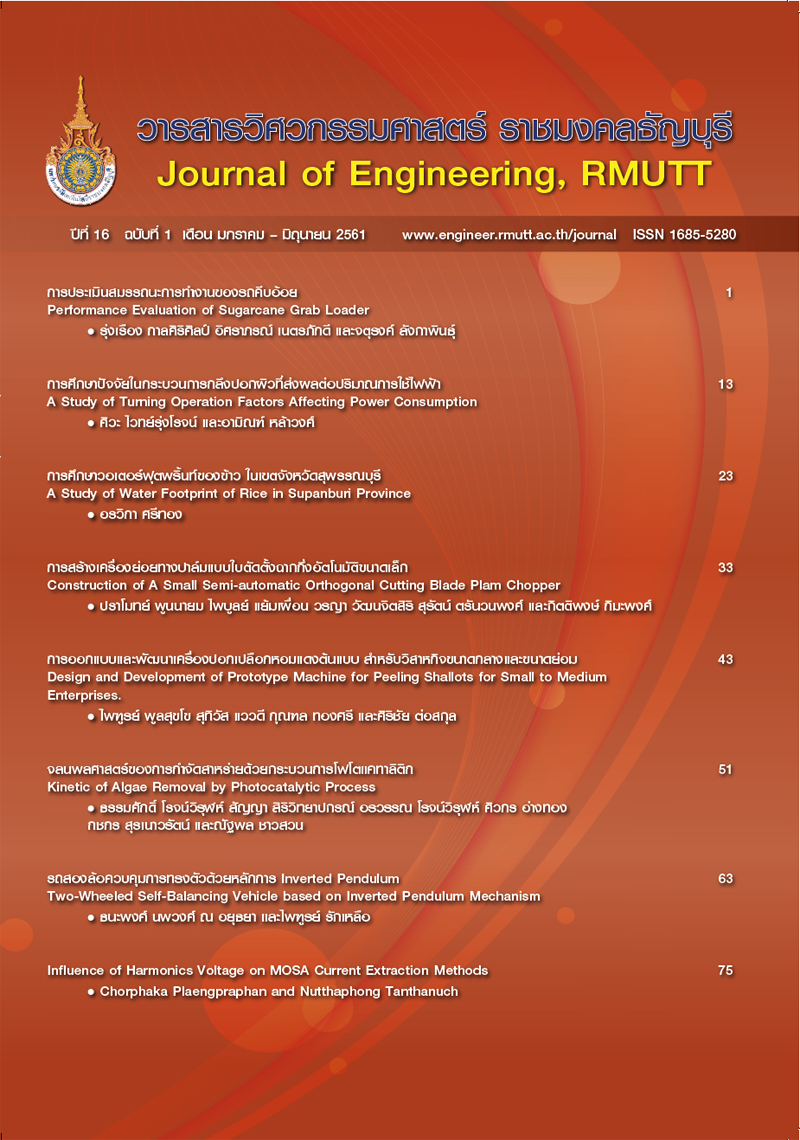Influence of Harmonics Voltage on MOSA Current Extraction Methods
Main Article Content
Abstract
The most common monitoring method of metal–oxide surge arrester is based on leakage current measurement, particularly, the component of resistive leakage current. Nowadays, there are several analytical methods used to extract the resistive leakage current. These analytical methods need both current and voltage signals. However, in fact, electrical system voltage contains harmonics and because of these harmonics, it may affect the accuracy of resistive leakage current extraction methods in different ways. The calculated results may be in error or incorrect. It can lead to erroneous evaluation or fault assessment. This paper compares the extracted results both amplitude and signal between three different methods; improve compensation method, harmonic analysis method and current orthogonality method.
The results have showed that voltage harmonics not affect resistive leakage current amplitude. However, they have an effect on current waveforms. The waveshapes obtained from different methods are not the same. Current orthogonality method gives the most accurate results because its algorithm calculates current on all frequencies and includes non-linear behavior of metal oxide material.
Article Details
The manuscript, information, content, picture and so forth which were published on Frontiers in engineering innovation research has been a copyright of this journal only. There is not allow anyone or any organize to duplicate all content or some document for unethical publication.
References
Muhammad Amin, Salman Amin and Muhammad Ali, “Monitoring of leakage current for composite insulators and electrical devices,” Adv.Mater.Sci. 21 : 75-89.
C. Heinrich and V. Hinrichsen, 2001. “Diagnostics and monitoring of metal-oxide surge arresters in high-voltage networks-comparison of existing and newly developed procedures”, IEEE Trans. Power Deliver. 16: 138-143.
Kuffel E.,Zaengl W. and Kuffel J., 2000. High voltage engineering fundamentals. 2nd ed. Oxford: Newnes.
J. Lundquist, L. Stenström, A. Schei and B.Hansen, 1990. “New method for measurement of the resistive leakage currents of metal-oxide surge arresters in service,” IEEE Trans. Power Del. 5, 4: 1811–1822.
Hanxin Zhu and M.R. Raghuveer, 1999. “Influence of harmonics in system voltage on metal oxide surge arrester diagnostics,” Conference on Electrical Insulation and Dielectric Phenomena: 542-545.
S.N. Fernando and M.R. Raghuveer, 2000. “Technique to examine the influence of voltage harmonics on leakage current based MOSA diagnostic indicator,” Conference on Electrical Insulation and Dielectric Phenomenoa: 596-599.
C. Plaengpraphan and N. Tanthanuch, 2015. “The development of leakage current measurement system for high voltage equipment,” The 4th International Symposium on Engineering, Energy and Environments: 135-141.
Zhi-niu Xu, Li-juan Zhao, Ao Ding and Fang-cheng Lü, 2013. “A current orthogonality method to extract resistive leakage current of MOSA,” IEEE Transactions on Power Delivery. 28, 1: 93-101


